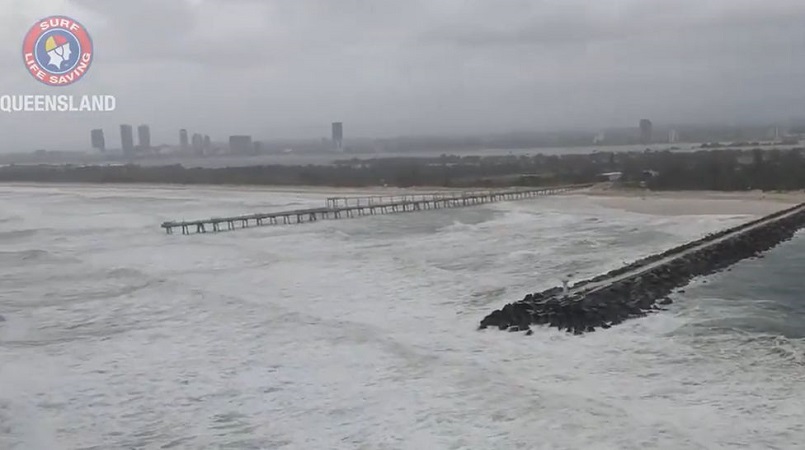
Wild weather is battering a 1,000km (621 miles) stretch of Australia's east coast, bringing torrential rain and "abnormally high" tides to cities including Brisbane and the Gold Coast.
More than 2,000 homes in the cities were out of power on Monday after strong winds tampered with power lines.
Tides up to 8m (26 feet) high were recorded, eroding the shoreline in some areas.
Emergency services said they had had over 700 calls for help since Sunday.
About half a dozen people stranded in floodwaters had been rescued, they added.
Meteorologists have warned that this Australian summer will see the impacts of a La Niña weather pattern, which typically brings more rainfall and tropical cyclones.
The current wild weather has hit popular holiday spots such as the Sunshine Coast and the Gold Coast in Queensland, and Byron Bay in New South Wales (NSW).
Many beaches were closed on Monday amid the dangerous conditions.
The border between the two states recently re-opened following pandemic-related closures, and authorities have warned people travelling for end-of-year holidays to exercise caution.
On Monday, Australia's Bureau of Meteorology (Bom) issued severe weather warnings for a vast coastal area stretching from Hervey Bay in Queensland to Taree in New South Wales.
Affected areas have been alerted to damaging winds, flash flooding and hazardous surf.
Local media reported that waves had washed away what was left of a popular beach in Byron Bay. It had already been depleted due to previous erosions.
Some places have already received over 400mm of rain within 24 hours.
"At this stage, the widespread heavy rainfall is expected to ease late Tuesday or early Wednesday," the bureau said.
The wet weather was also affecting Queensland's Fraser Island - a Unesco-listed World Heritage site. Just a week ago, major bushfires ripped through half of the island's dry bush.
"These are dynamic weather systems and you should always expect the unexpected," said Bom spokesman Justin Robinson.
Locals across the subtropical east coast hunkered down on Monday, with some sandbagging homes as they braced for floods.
In eastern Australia, the average December-March rainfall during a La Niña year is around 20% higher than the long-term average, says the Bom.
